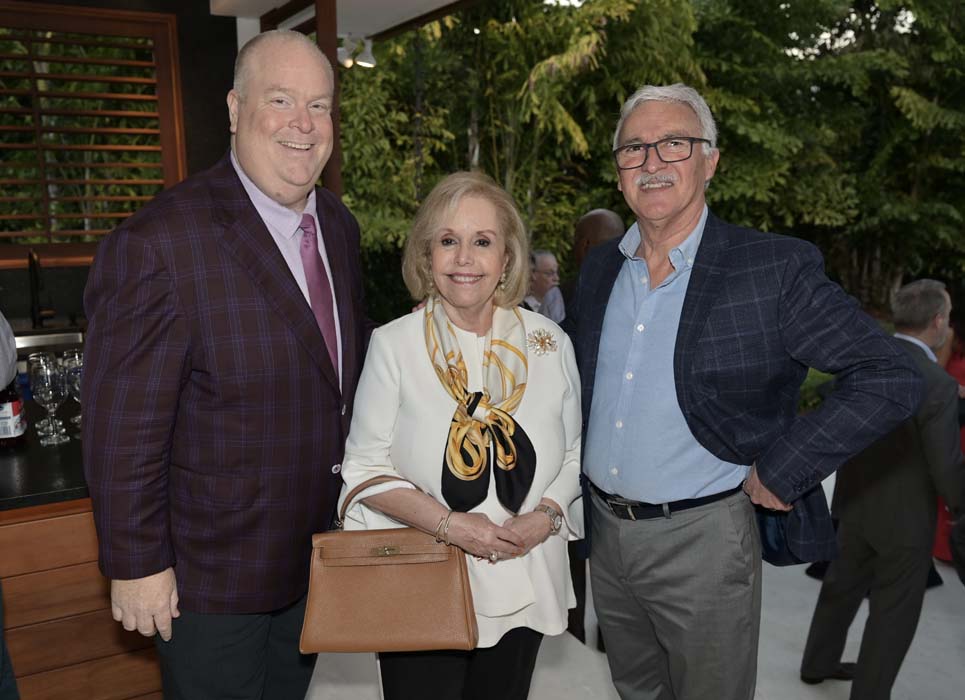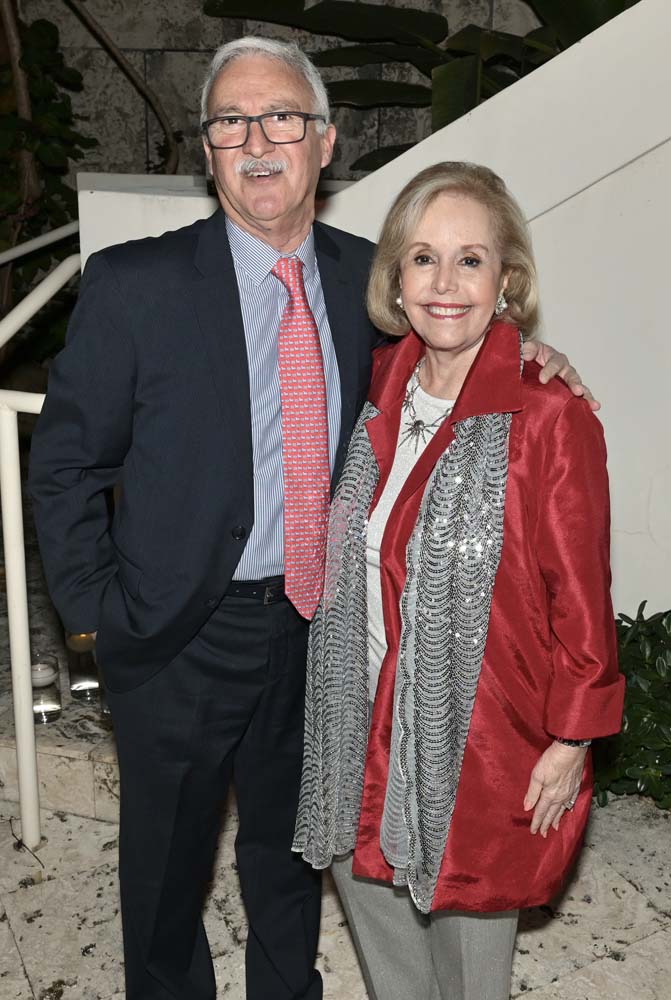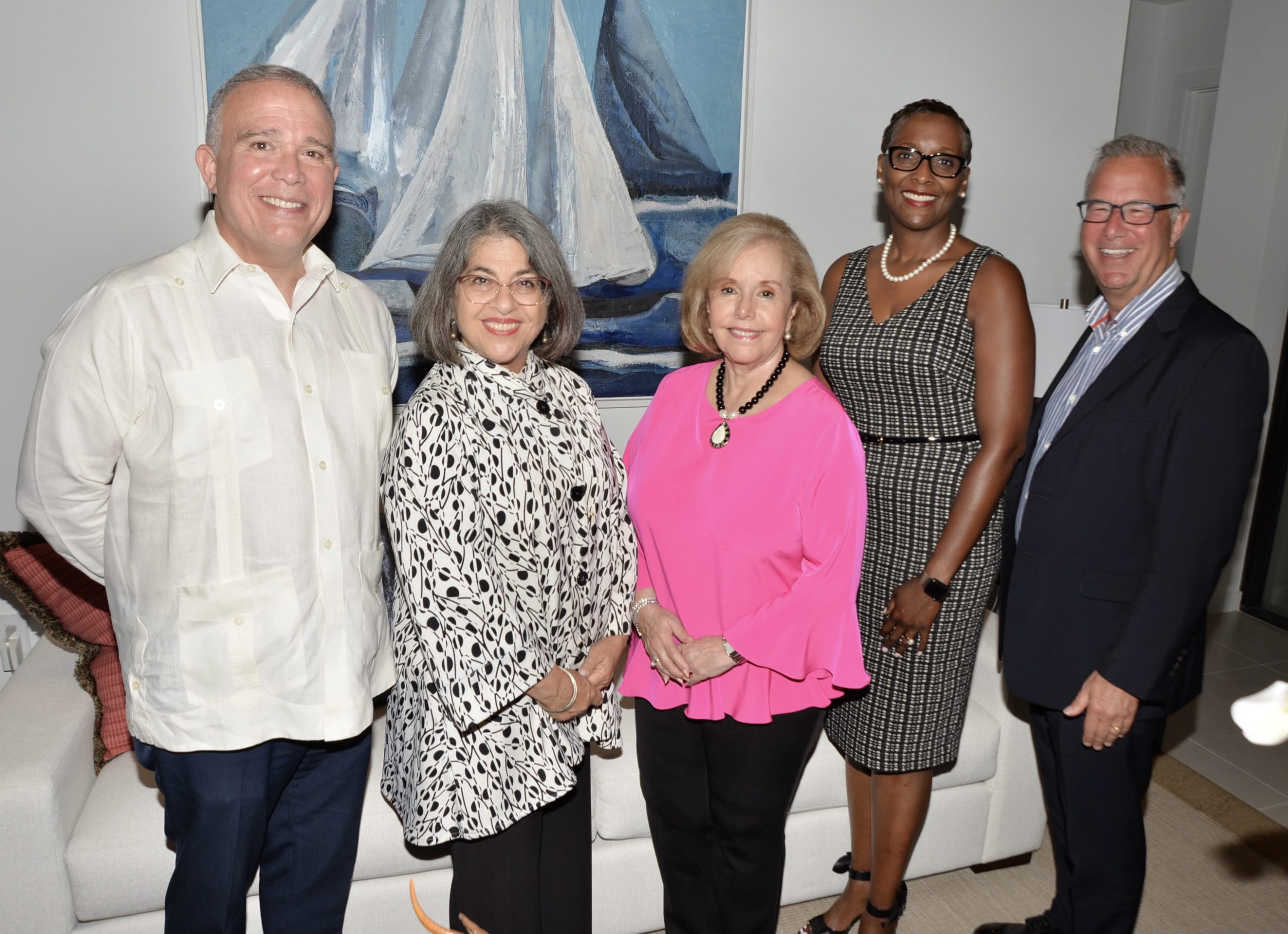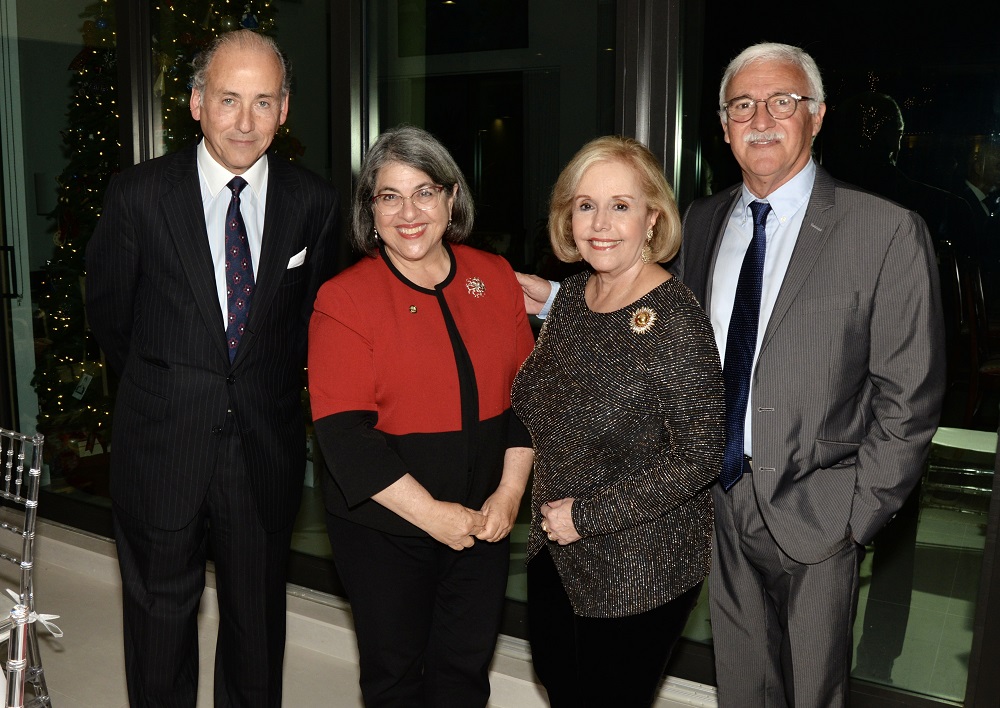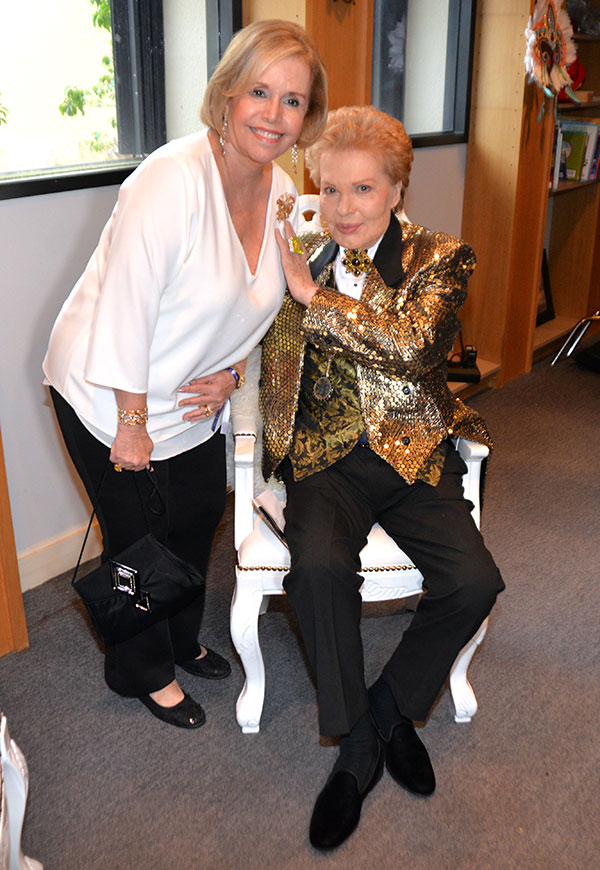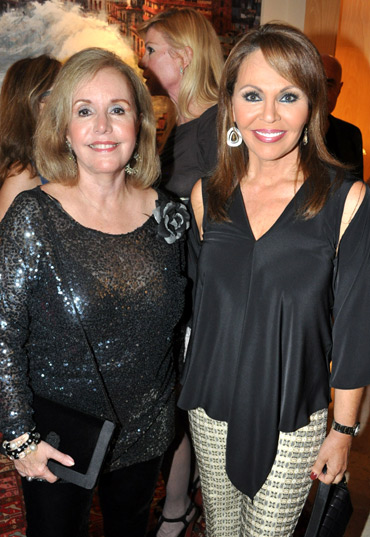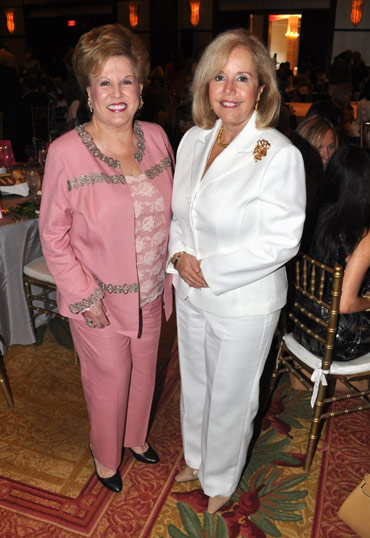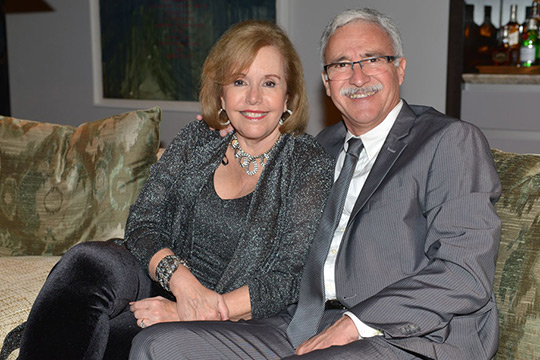Cuban-American female immigrant beats long odds to become influential Miami leader, heralded U.S. entrepreneur
BY SARAH MORENO for the MIAMI HERALD, EL NUEVO HERALD | SMORENO@ELNUEVOHERALD.COM

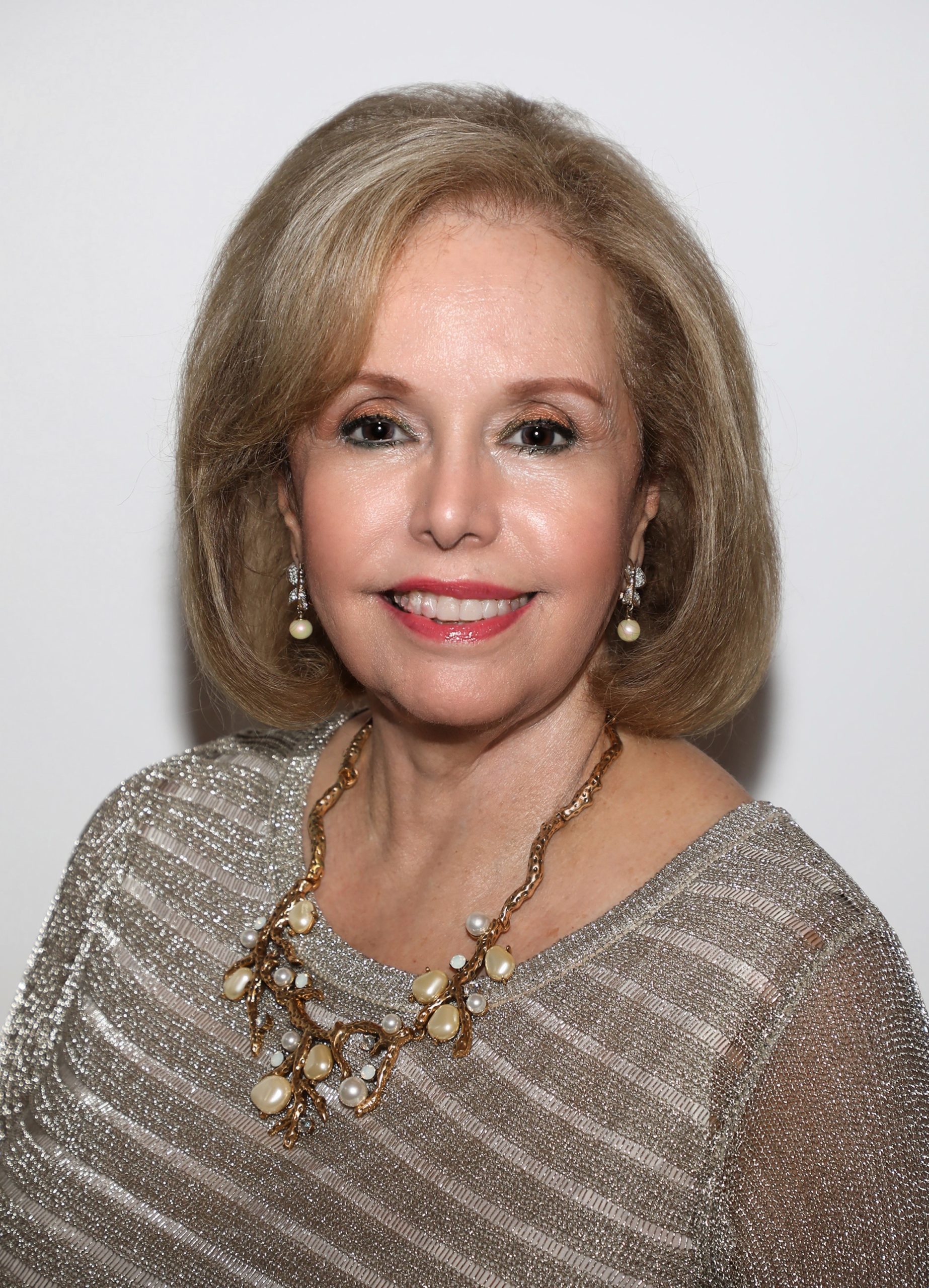
When Aida Levitan arrived in Miami in 1961 at the age of 13, she was alone and penniless because even the gold earrings she wore for the trip to America were taken away at the Havana airport.She never imagined one day she would be included among the leading women in the U.S. financial sector.
In November 2022, Levitan was selected for Forbes magazine’s 50 Over 50 list, which recognized outstanding women across various business and entertainment fields. The only Cuban American among the honorees, her business accomplishments were noted with female executives from JP Morgan Chase and Charles Schwab, Harvard University economists and the president of the Federal Reserve Bank of San Francisco.
The national distinction capped Levitan’s pioneering career, highlighted by her recent work as chair of the board of U.S. Century Bank, one of the biggest community banks in Miami. She joined in 2017, when she was 69.
During her long tenure in Miami, Levitan has succeeded in leadership roles in the public and private sectors. In business, she’s been a trailblazer, starting with Fausto Sanchez the advertising and public relations company Sanchez & Levitan. It was the first Hispanic agency of its kind in the country. In 2003, Levitan sold the agency to Publicis, one of the oldest and now biggest communications companies in the world by revenue.
Levitan, 75, decided in December to pass the baton as chair of U.S. Century, although she remains on the board of directors. Now, she’s focused on leading nonprofit ArtesMiami, the brainchild of her son Alex Fumero, a filmmaker. He inspired her to support artists and cultural organizations that receive less support from the cultural establishment.
She talked recently with the Miami Herald about her career, the importance of supporting women with leadership potential and her humble early days in Miami. The interview was edited for length and clarity.
AS A YOUNG FEMALE IMMIGRANT, DID YOU IMAGINE EVER EARNING NATIONAL RECOGNITION LIKE YOU RECEIVED FROM FORBES MAGAZINE?
No. I came to the United States and to Miami in particular under Operation Pedro Pan, which brought 14,000 children without their families. We were fleeing communism and dictatorship. The truth is that at that time I did not imagine what I would be able to achieve in the United States. But this is a country that offers many opportunities. When I finished high school at Miami Beach Senior High, a counselor told me you can be a secretary. I said I didn’t want to be a secretary. What I want is for you to help me get a scholarship to study at the University of Miami. And four years later, I told the college dean the same thing, and she helped me earn a scholarship to get my Ph.D. That’s how I achieved a doctorate in Spanish literature from Emory University. All of this prepared me with an education that gave me critical judgment and allowed me to start a career, first in public administration and later in public relations and advertising. Then I did realize all the possibilities here in the United States when one has ambition, preparation and work abilities.
WHAT WAS YOUR RESPONSIBILITY AT U.S. CENTURY BANK AND WHY IS THE BANK IMPORTANT TO THE COMMUNITY?
As chair, I directed the strategic vision that we created for the management team led by Luis de la Aguilera, the CEO who has 35 years of experience in banking. I am not a banker, but I know this community well. I have a reputation for integrity, and it is always in the best interest of a bank that the reputation for integrity of board members is conveyed in the bank’s image.
That’s especially important for this bank, because during the recession in 2008 and 2009 the bank was in the hands of another administration and another board that had many problems. The federal government had to intervene and give money to the bank. The new directors and investors brought in Aguilera, and that was one of my contributions. I found him. I also found Benigno Pasos, the chief credit officer. Both men have a combined experience of 70 years in banking.
U.S. Century’s reputation in the community also has been key to opening doors to new clients, which I have brought to the bank. My experience developing strategic plans, something I’ve done since I was owner of the Sanchez & Levitan agency, also helped the bank.
HOW HAVE THE CAREER PROSPECTS OF WOMEN CHANGED, AND REFLECT ON THE IMPORTANCE OF WOMEN HELPING EACH OTHER TO ADVANCE THEIR CAREERS?
I have a very interesting historical perspective on Miami, from when I became director of Latino affairs for the county, which back then was called Dade. It was an office with 100 employees in 1977.
At that time, women collaborated to a certain extent, but not enough. At the same time, there were women who were jealous of other women, and criticized them, attacked them. I was the target of some of those criticisms and intrigues, and I suffered a lot.
In 1978, I told myself what is missing here is a structured way to create that collaboration. It occurred to me to create the Coalition of Hispanic American Women, better known by the acronym CHAW. We showed up at the American Club, where only men went to play dominos and do business. Eighty important women from Miami, all there as Hispanics, as Cuban Americans, to create that mix of collaboration and assistance, and claim our place in the world of power and money. That coalition was very useful for many years.
To this day, I feel one of my duties and purposes in the world is to help women. For example, at the bank I always try to support everyone. But when I see a very talented woman with ambition who knows how to attract and take care of clients, I do my best to help her, to advise, to celebrate her in front of the bosses. That helps ensure women are never underestimated and the confidence these women have in themselves is never undermined.
WHAT WAS YOUR LIFE LIKE IN CUBA AND WHAT DID IT MEAN TO BE PART OF THE PEDRO PAN EXODUS TO AMERICA?
In Cuba, my family lived in Nuevo Vedado, a suburb of the Vedado district that had more modern houses. I’m talking about the 1950s and early 1960s. We had a modest house, which my mother and my aunt bought after saving for many years. They were very happy, and we had parties. We would go on excursions, on picnics. We had a very nice life in Phillips, a bilingual school. Suddenly the revolution came, and in 1961, everything is declared communist. We began to feel the persecution.
I was the first in my family to receive a passport. My mother told me I had to go alone to America and a friend of hers would be there for me. For me, that was terrible. I was 13 years old, and I cried every day because I was my mother’s little girl and we had never been apart.
I was very lucky because my life changed for only 30 days. At the end of the first month, my mother arrived with my brother, and we were able to get together in a rundown hotel that was in Little Havana. Then my mother rented an apartment in Little Havana.
COULD YOU TAKE ANY MONEY OUT OF CUBA?
No. They even took away my gold earrings in the famous fishbowl, a room surrounded by glass in the Havana airport where Cubans wait for their flights to depart.
WHAT WERE YOUR FIRST JOBS IN THE UNITED STATES?
I worked serving tea at school because we didn’t have even a dollar to pay for lunch. All the children saw me, and it was a little humiliating. But my mother used to tell me work is never humiliating. After school, I had to work as a secretary and stenographer in a hotel. My brother would get up at 4 a.m. to deliver newspapers. Everyone contributed to the survival of the household and the family.
Another of my first jobs was organizing a street party on Calle Ocho, before the festival even existed. Later I worked at St. Thomas University, where I became well known so that I was eventually appointed director of Latino affairs for the county.
WHAT WAS HAPPENING WHEN THE CITY OF MIAMI HIRED YOU?
More than 130,000 Cubans came via the Mariel-Key West boatlift, and it was a difficult time in Miami. Joseph Grassi, Miami city manager at that time, asked me if I was interested in the position of director of information and visitors for the city. I worked with Mayor Maurice Ferre, who was a visionary. In 1980, he told me we have to promote Miami as an international business center. It was a time when Time magazine called South Florida a lost paradise. The November 1981 article was titled Paradise Lost? In addition to the 130,000 Cuban refugees, there were race riots in Liberty City, drug-related shootings even on Brickell Avenue.
It all happened at the same time. We took advantage of that negative publicity to bring newspaper editors to the city. In a 10-year span, we made journalistic tours and talked about the international banks that were in Miami, the airport and the free zone.
HOW DID YOU START AS AN ENTREPRENEUR?
I told Miami mayor Ferre that I wanted to leave the city and create a public relations agency. Later with Fausto Sanchez, I created Sanchez & Levitan. Fausto came from the world of television and commercials production and was a friend of actor Andy Garcia. In 1992, we organized a concert with Garcia and one of the masters of Cuban music, Israel Lopez Cachao. And the documentary Cachao … como su ritmo no hay dos (Cachao … there is no other rhythm like his) was recorded there. I am very proud of what we did for Cachao.
Aida Levitan is a philanthropist and the founder of ArtesMiami, the organization has donated more than $2.7 million in in-kind services and cash to cultural organizations and artists, primarily in South Florida.
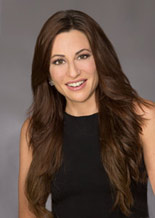
Brett Graff is SocialMiami.com’s managing editor and has been a journalist covering money, people and power for over 20 years. Graff contributes to national media outlets including Reuters, Glamour, Harper’s Bazaar, Maxim, and the PBS show, Nightly Business Report. A former U.S. government economist, her nationally syndicated column The Home Economist is first published in The Miami Herald and then on the Tribune Content Agency, where it’s available to over 400 publications nationwide. She is broadcast weekly on two iHeartRadio news shows and is the author of “Not Buying It: Stop Overspending & Start Raising Happier, Healthier, More Successful Kids,” a parenting guide for people who might be tempted to buy their children the very obstacles they’re trying to avoid.


